
Orvis, founded in 1856, is a trusted name in fly fishing, offering high-quality gear, education, and expertise. Renowned for its commitment to conservation and innovation, Orvis provides anglers with premier equipment and resources to enhance their fly fishing experiences worldwide.
1.1. History of Orvis
Founded in 1856 by Charles F. Orvis, the company began as a mail-order retailer specializing in fly fishing equipment. Over the years, Orvis expanded its offerings to include high-quality clothing, outdoor gear, and accessories. Known for its commitment to innovation and customer satisfaction, Orvis has grown into a global brand, offering everything from fly rods and reels to apparel and home goods. The company also operates fly fishing schools and shooting grounds, solidifying its reputation as a leader in outdoor recreation. Today, Orvis remains family-owned and dedicated to preserving the traditions of fly fishing while embracing modern advancements in gear and techniques.
1.2. The Orvis Mission and Values
Orvis is driven by a mission to inspire a deep connection to nature and outdoor recreation. The company values innovation, quality, and conservation, striving to provide exceptional products and experiences for anglers and outdoor enthusiasts. Orvis is committed to sustainability and ethical practices, ensuring its operations protect the environment and preserve fish habitats. Through its dedication to customer satisfaction and community engagement, Orvis fosters a culture of respect and stewardship for the natural world. By prioritizing excellence and integrity, Orvis aims to be a trusted partner for generations of fly fishers and outdoor lovers.
1.3. Why Orvis is a Trusted Name in Fly Fishing
Orvis has earned its reputation as a trusted name in fly fishing through its unwavering commitment to quality, innovation, and customer satisfaction. With over 165 years of expertise, the company offers a wide range of fly fishing gear, from rods and reels to waders and apparel, all designed to meet the highest standards. Orvis’s dedication to conservation efforts and sustainable practices further solidifies its trustworthiness within the fishing community. Its fly fishing schools and workshops provide anglers with the skills and knowledge needed to succeed. By combining tradition with innovation, Orvis continues to be a go-to destination for both novice and experienced fly fishers seeking reliable and exceptional products.
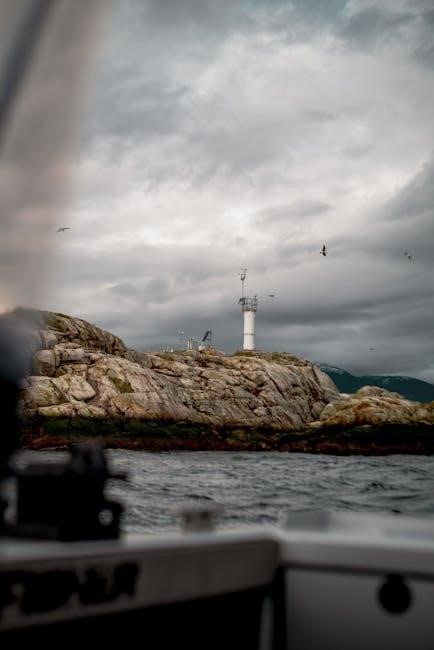
The Basics of Fly Fishing
Fly fishing is an artful and precise angling method using specialized gear to cast lightweight lures, requiring skill and patience to connect with fish in diverse water environments.
2.1. What is Fly Fishing?
Fly fishing is a distinct and precise method of angling that uses a lightweight lure, or “fly,” to attract fish. Unlike traditional fishing, which relies on weighted lures or bait, fly fishing utilizes a weighted line and specialized casting techniques to present the fly to the target. This method is particularly popular in freshwater environments, such as rivers and streams, where trout and other game fish are commonly sought after. The essence of fly fishing lies in the skillful presentation of the fly, mimicking the natural movements of insects or baitfish to entice a strike. It is both a sport and an art form, requiring patience, practice, and a deep connection with nature.
2.2. Basic Fly Fishing Techniques
Fly fishing involves several fundamental techniques that anglers must master to succeed. The overhead cast is the most common, using a back-and-forth motion to generate line speed and accuracy. The roll cast is ideal for tight spaces, allowing the line to roll across the water’s surface. Hauling enhances casting distance and power by pulling the line with the non-casting hand. Mending involves adjusting the line on the water to achieve a natural drift. Each technique requires practice to execute effectively, ensuring precise fly placement and presentation. Mastering these basics is essential for connecting with fish and fully experiencing the art of fly fishing.
2.3. Types of Fly Fishing Casts
Fly fishing involves various casting techniques tailored to different fishing scenarios. The overhead cast is the most common, using a back-and-forth motion to generate line speed. The roll cast is ideal for tight spaces, allowing the line to roll across the water. Hauling enhances casting distance and power by pulling the line with the non-casting hand. Mending adjusts the line on the water for a natural drift. Each cast requires precise timing and practice to ensure accurate fly placement and presentation. These techniques are essential for adapting to diverse fishing conditions and maximizing the effectiveness of your fly fishing experience.
Selecting the Right Fly Fishing Gear
Selecting the right fly fishing gear is crucial for success. Match rods, reels, and lines to your target species and fishing conditions. Essential components include appropriate flies, leaders, and tippet for optimal performance.
3.1. Choosing the Right Fly Rod
Selecting the right fly rod is essential for a successful fishing experience. Consider the type of fishing, target species, and personal preference when choosing. Rods vary in length, weight, and action. Fast-action rods offer precision and power for larger fish, while medium-action rods provide versatility for everyday use. Slow-action rods are ideal for delicate presentations. Graphite rods are lightweight and sensitive, while fiberglass rods are durable and forgiving. Match the rod weight to the fly line and species, ensuring proper balance. Orvis offers a range of high-quality rods designed for specific fishing conditions. Test casting before purchasing can help determine the best fit for your needs and skill level.
3.2. Understanding Fly Reels and Their Importance
Fly reels are a critical component of fly fishing, serving as the backbone of your setup. They store and manage fly line, provide a smooth drag system to tire fish, and balance the rod. Reels are made from durable materials like aluminum or carbon fiber, ensuring longevity. Key features include adjustable drag, large arbors for quick line retrieval, and a reliable braking system. Orvis offers high-quality reels, such as the Clearwater series, designed for performance and affordability. When selecting a reel, consider the type of fishing, the size of the target species, and compatibility with your fly rod and line. Proper maintenance ensures optimal functionality and longevity.
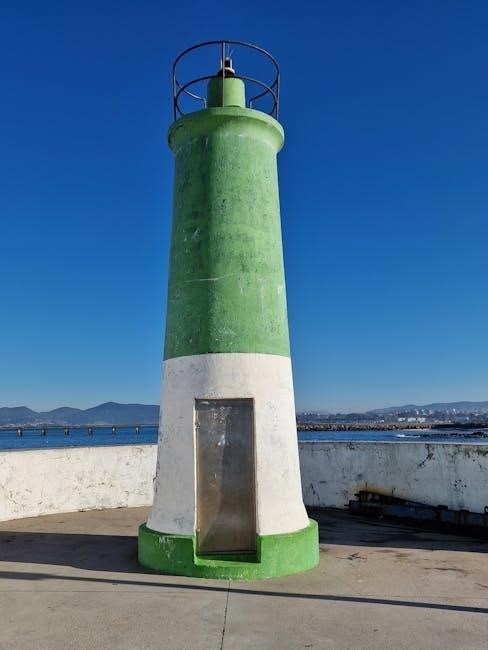
3.3. Fly Lines: Weight, Length, and Material
Fly lines are a cornerstone of fly fishing, determining casting performance and presentation. They come in various weights, measured using the American Fly Fishing Trade Association (AFFTA) standard, ranging from 1 to 15; The weight corresponds to the line’s grain weight and is matched to the fly rod for optimal casting. Fly lines are typically 90 feet long, including a 30-50 foot weighted head and a 60-foot running line. Materials include PVC-coated lines for durability and PFDS (polyvinylidene fluoride) for a more environmentally friendly option. Orvis offers a range of fly lines tailored to specific fishing conditions, ensuring anglers can adapt to different waters and species. Proper line selection enhances accuracy, distance, and control, making it essential for a successful fly fishing experience.
3.4. Leaders and Tippet: What You Need to Know
Leaders and tippet are essential components in fly fishing, connecting the fly line to the fly and ensuring a natural presentation. Leaders are typically 7-12 feet long, tapering in diameter to transfer energy smoothly during casting. Tippet, the final section, is attached to the leader and ranges from 12-24 inches. Materials vary, with monofilament and fluorocarbon being popular choices for their strength and invisibility. The tippet’s size, measured in X ratings, must match the leader and fly type. Properly selecting and maintaining leaders and tippet ensures effective fly presentation and minimizes visibility to fish. Orvis offers a range of leaders and tippet materials tailored to specific fishing conditions and species.
3.5. Essential Fly Patterns for Beginners
For beginners, selecting the right fly patterns is crucial to success. Start with versatile flies that imitate common insects and baitfish. Dry flies like the Elk Hair Caddis and Blue-Winged Olive are excellent for surface action. Nymphs, such as the Hare’s Ear and Pheasant Tail, mimic subsurface insects. Streamers like the Woolly Bugger are effective for targeting larger fish. Terrestrials, including foam hoppers and ants, work well during summer months. These patterns are easy to use and cover a wide range of fishing scenarios. Orvis offers starter fly assortments tailored for beginners, ensuring you have the right flies to catch fish in various conditions. Building a basic fly box with these essentials will enhance your early fly fishing experiences.
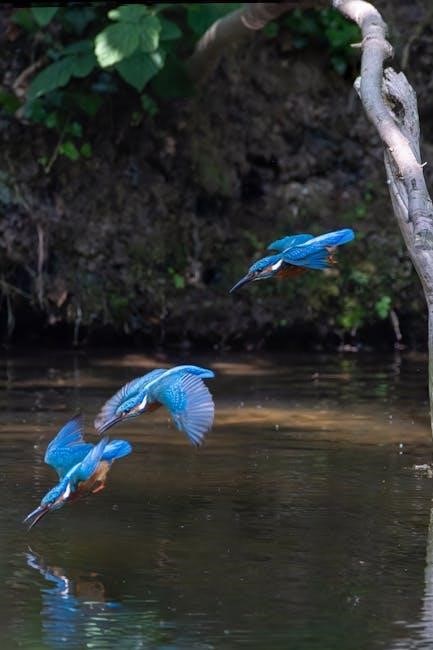
Waders and Apparel for Fly Fishing
Orvis offers high-quality waders and apparel designed for comfort and durability. Breathable materials ensure mobility, while moisture-wicking fabrics keep you dry. Layering options provide versatility in varying conditions, and waterproof jackets protect against the elements. Accessories like neoprene socks enhance wading comfort, making Orvis your one-stop shop for functional fly fishing gear.
4.1. The Importance of Waders in Fly Fishing
Waders are an essential component of fly fishing gear, providing protection from cold water and rough terrain. Orvis offers high-quality waders made from durable, waterproof materials like PVC and neoprene, ensuring longevity and comfort. Designed with adjustable straps and gravel guards, they prevent debris from entering and enhance mobility. Breathable fabrics help regulate body temperature, keeping anglers dry and comfortable during long fishing sessions. Waders also provide insulation in cold water, allowing anglers to fish year-round. Additionally, they protect against sharp rocks and aquatic vegetation, making them a vital piece of equipment for both safety and functionality. Investing in a good pair of waders is crucial for an enjoyable and successful fly fishing experience.
4.2. Choosing the Right Wading Boots
Choosing the right wading boots is crucial for comfort, stability, and performance in fly fishing. Orvis offers a variety of boots designed to meet different fishing conditions, ensuring durability and traction. Key factors include fit, support, and material. Boots should fit snugly to prevent blisters and provide adequate ankle support for rough terrain. Sturdy materials like rubber and high-quality synthetics are essential for withstanding harsh environments. Traction is vital for slippery surfaces, with specialized soles designed to grip rocks and mud. Additionally, look for features like waterproofing, drainage systems, and cushioning for long-lasting comfort. Selecting the right pair ensures a secure and enjoyable fishing experience, allowing anglers to focus on their casting and technique.
4.3. Fly Fishing Clothing: Layers and Materials
Fly fishing clothing is designed to provide comfort, flexibility, and protection in various fishing environments. Layering is key, with breathable base layers, insulating mid-layers, and waterproof outer shells. Orvis offers high-quality materials like fleece, wool, and cashmere for warmth, while lightweight, moisture-wicking fabrics ensure coolness in warmer conditions. Waterproof and wind-resistant jackets are essential for unpredictable weather. Clothing should also allow for ease of movement, enabling anglers to cast and wade effortlessly. Orvis’s collection includes durable, functional designs tailored for both men and women, ensuring a perfect blend of style, comfort, and performance. The right clothing enhances the overall fly fishing experience, keeping anglers focused and comfortable throughout the day.
4.4. Accessories for Fly Fishing
Accessories play a crucial role in enhancing the fly fishing experience. Orvis offers a wide range of essential items, including fly boxes for organizing flies, nippers for trimming excess line, and forceps for removing hooks gently from fish. Strike indicators, leaders, and tippet materials are also vital for optimizing presentations. Additionally, hats, polarized sunglasses, and sunscreen protect anglers from the elements. Wader bags and storage solutions help keep gear organized and within reach. Orvis accessories are designed to improve efficiency, comfort, and overall performance on the water. These practical tools ensure anglers are prepared for any fishing scenario, making every trip more enjoyable and successful.

Fly Fishing Techniques and Strategies
Mastering fly fishing requires precision and adaptability. Techniques like nymphing, dry fly fishing, and streamer fishing are essential, each suited for specific water conditions and target species.
5.1. Essential Fly Fishing Skills Every Angler Should Master
Mastering fly fishing begins with essential skills that enhance both technique and efficiency. Accurate casting is fundamental, as it ensures precise fly placement. Line control and mending are critical for maintaining a natural drift, reducing drag, and increasing the chances of a strike. Understanding knot tying is another vital skill, as it ensures secure connections between lines, leaders, and flies. Additionally, the ability to read water—identifying currents, depths, and potential holding spots for fish—is indispensable. Finally, proper fly presentation, including the subtlety of the cast and retrieve, is key to mimicking natural insect behavior. These skills, when honed, elevate every angler’s experience on the water.
5.2. Reading the Water: How to Find Fish
Reading the water is a cornerstone of successful fly fishing, enabling anglers to locate fish effectively. Understanding currents, depths, and structural features like rocks, weed beds, and undercut banks helps identify potential holding spots. Observing insect hatches and surface activity provides clues about feeding patterns. Seasonal changes and time of day also influence fish behavior. Patience and keen observation are essential for deciphering these elements. By mastering water reading skills, anglers can better target trout and other species, enhancing their chances of a productive day on the water.
5.3. Presentation: How to Cast and Retrieve
Presentation is the art of delivering your fly naturally to trout, requiring precise casting and retrieval techniques. A smooth, accurate cast ensures your fly lands softly, mimicking insect behavior. Varying retrieval speeds and patterns can entice strikes, depending on the fly type and water conditions. Practice casting with control, focusing on line placement and drift. Retrieving too quickly or slowly can deter fish, while subtle pauses and varied movements often provoke bites. Effective presentation combines patience, observation, and adaptability, making it a critical skill for successful fly fishing. Mastering these techniques enhances your ability to connect with fish in diverse aquatic environments.
5.4. Nymphing: A Comprehensive Guide
Nymphing is a highly effective fly fishing technique that involves using weighted flies, or nymphs, to imitate the larval stages of insects. These flies sink below the surface, targeting trout feeding on the riverbed. To nymph effectively, use a strike indicator to detect subtle bites and employ a dead drift presentation, allowing the nymph to move naturally with the current. Choose patterns that match the local insect hatch and adjust the depth based on water conditions. Retrieve slowly, lifting the rod tip to set the hook when a strike occurs. Nymphing requires patience and precision but is rewarding, as it often yields larger trout in deeper waters.
5.5. Dry Fly Fishing: Tips and Tricks
Dry fly fishing is an exhilarating technique where flies float on the water’s surface, mimicking emerging insects. To succeed, match your fly patterns to the current hatch and use a lightweight rod with a floating line. Approach the water stealthily to avoid spooking trout. Cast accurately, aiming for natural drifts without drag. When a fish rises, set the hook quickly with a sharp lift of the rod. Observe the water for feeding activity and adjust your presentation accordingly. Dry fly fishing requires patience and precision but offers tremendous rewards when done correctly, making it a favorite among experienced anglers seeking a challenging yet thrilling experience.
5.6. Streamer Fishing: When and How to Use Streamers
Streamer fishing is an aggressive and dynamic technique that imitates larger prey like baitfish or leeches. Streamers are ideal for targeting larger trout in deeper waters or during periods of low light. Use streamers when fish are actively feeding on bigger meals, such as during cold weather or in stained water. Retrieve streamers with sharp strips or swings to mimic fleeing bait. Opt for weighted patterns or sinking lines to reach deeper zones. Vary your retrieve speed and depth to adapt to fish behavior. Streamer fishing requires robust gear, including a sturdy rod and reel, to handle the weight of the fly and the fight of larger trout. This method is perfect for anglers seeking an exciting way to connect with trophy fish.

Fly Fishing Destinations and Experiences
Explore renowned fly fishing destinations worldwide, from Montana’s rivers to Patagonia’s lakes. Orvis-endorsed lodges offer expert guides, exclusive access, and unforgettable angling experiences tailored for every skill level.
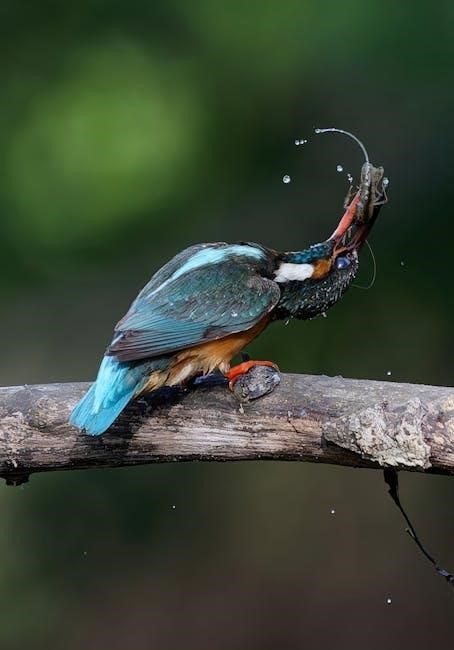
6.1. Famous Fly Fishing Destinations Around the World
From the pristine rivers of Montana to the crystal-clear lakes of Patagonia, fly fishing enthusiasts can explore a variety of iconic destinations. Known for their abundant trout populations and stunning natural beauty, places like the Madison River in Montana, the San River in Poland, and the Rio Grande in Argentina attract anglers globally. Orvis-endorsed lodges and guides provide unparalleled access to these locations, ensuring memorable experiences. Whether chasing rainbow trout in Alaska or targeting tarpon in the Caribbean, these destinations promise thrilling adventures and unforgettable scenery for fly anglers of all skill levels.
6.2. Orvis-Endorsed Lodges and Guides
Orvis-Endorsed Lodges and Guides are meticulously selected to provide exceptional fly fishing experiences. With over 300 endorsed locations worldwide, these lodges and guides offer unparalleled expertise, ensuring anglers access to prime fishing spots and tailored adventures. From luxurious retreats to rustic getaways, each lodge is vetted for quality and service. Guides are knowledgeable locals who understand the water, fish behavior, and optimal techniques. Whether you’re a seasoned angler or a beginner, Orvis-endorsed destinations promise unforgettable experiences, combining stunning natural beauty with expert guidance. Their global network spans famous fly fishing regions, ensuring a seamless and enriching adventure for all skill levels.
6.3. Planning Your Fly Fishing Trip
Planning your fly fishing trip requires careful research and preparation. Start by identifying your destination, considering factors like fish species, water conditions, and seasonal patterns. Orvis offers extensive resources to guide your selection, ensuring you choose locations that match your skill level and interests. Timing is crucial, as fish behavior varies with seasons. Pack essential gear, including rods, reels, flies, and appropriate clothing. Check local regulations and obtain necessary permits. Budget for guides or lodges if desired, as they provide valuable expertise. Finally, plan for contingencies like weather changes. With thorough planning, your fly fishing adventure will be well-organized and enjoyable, maximizing your time on the water.

Conservation and Sustainability in Fly Fishing
Orvis is deeply committed to conservation, dedicating efforts to protect trout habitats and ecosystems. Sustainable practices are essential for preserving fly fishing’s future and natural environments;
7.1. Orvis’s Role in Conservation Efforts
Orvis has long championed conservation, dedicating significant resources to protect trout habitats and ecosystems. Through partnerships with organizations and initiatives, Orvis works tirelessly to restore waterways, promote sustainable fishing practices, and educate anglers on environmental stewardship. Their efforts include funding conservation projects, advocating for policy changes, and engaging communities in environmental protection. By integrating conservation into their business model, Orvis sets a high standard for responsible outdoor recreation, ensuring that fly fishing remains viable for future generations.
7.2. Sustainable Practices in Fly Fishing
Sustainable practices are vital for preserving fly fishing environments and ensuring the sport’s longevity. Key practices include catch-and-release fishing to minimize fish populations’ impact, using barbless hooks to reduce injury, and avoiding single-use plastics. Anglers are encouraged to respect local ecosystems by removing trash and minimizing habitat disruption. Orvis promotes eco-friendly gear, such as recyclable fly lines and biodegradable materials, to reduce environmental footprints. Additionally, supporting conservation organizations and participating in local clean-up initiatives foster a culture of sustainability. By adopting these practices, fly anglers contribute to healthier waters and biodiversity, ensuring future generations can enjoy the sport responsibly.
7.3. Protecting Trout Habitats and Ecosystems
Protecting trout habitats is critical for maintaining healthy ecosystems and ensuring the survival of trout populations. Orvis actively supports conservation efforts, such as restoring rivers, planting native vegetation, and combating invasive species. Anglers play a vital role by practicing catch-and-release fishing, avoiding sensitive habitats, and adhering to local regulations. Simple actions, like properly disposing of waste and minimizing sediment disturbance, can significantly impact water quality. Orvis collaborates with organizations to educate the public on the importance of conservation and promotes sustainable fishing practices. By prioritizing habitat preservation, anglers help safeguard trout populations and the ecosystems they inhabit, ensuring a thriving environment for future generations to enjoy;
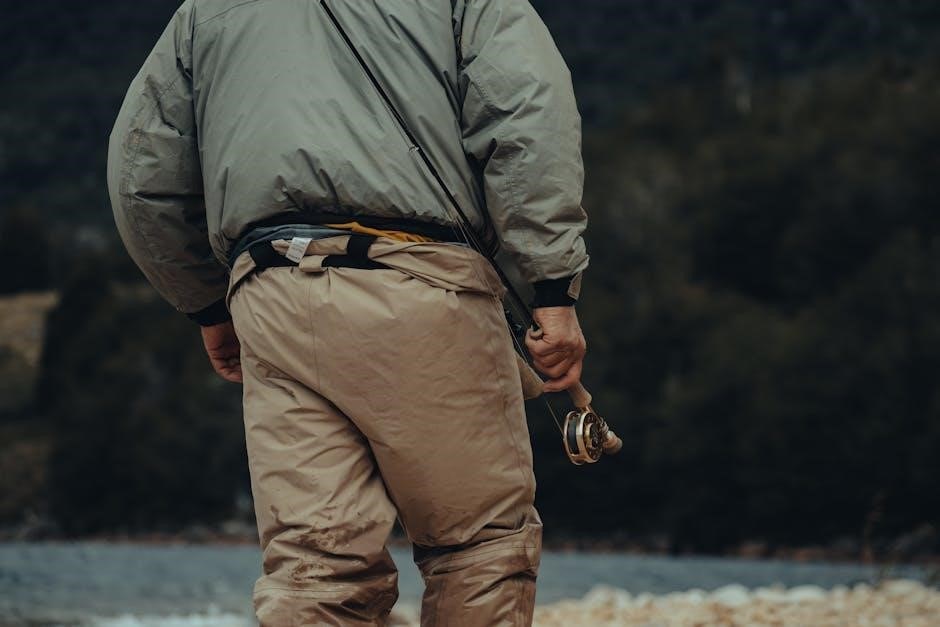
Resources and Community
Orvis offers extensive resources, including fly fishing schools, workshops, and a dedicated blog and podcast. Join the Orvis community to connect with anglers, share knowledge, and grow your passion for fly fishing.
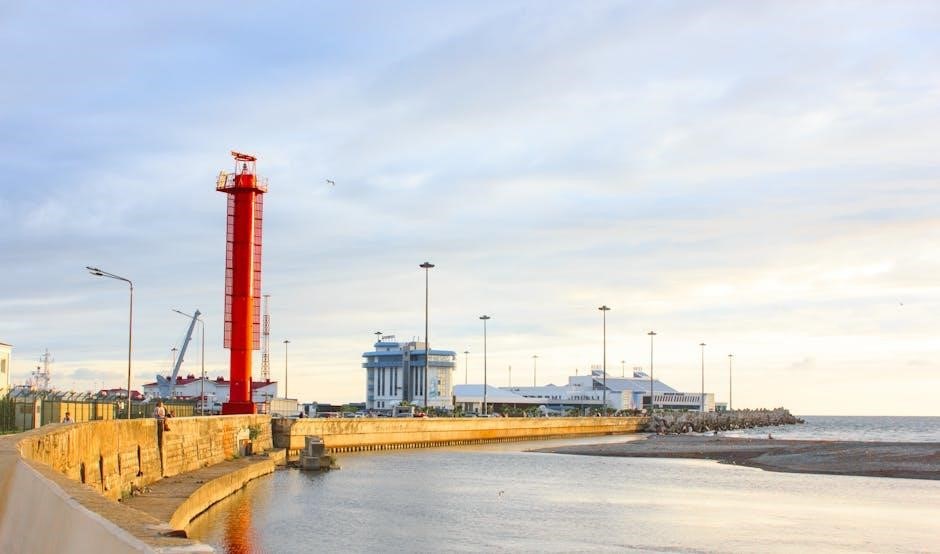
8.1. Orvis Fly Fishing Schools and Workshops
Orvis Fly Fishing Schools and Workshops provide hands-on instruction for anglers of all skill levels. From beginner courses covering casting techniques to advanced sessions on specific fishing methods, Orvis instructors deliver expert guidance. These programs emphasize both the technical and practical aspects of fly fishing, ensuring participants gain confidence and proficiency. Workshops often include on-water practice, allowing students to apply newfound skills in real fishing scenarios. With a focus on creating a supportive learning environment, Orvis schools help anglers refine their craft and deepen their appreciation for the sport. Whether you’re a novice or seeking to improve, Orvis offers the perfect educational experience.
8.2. The Orvis Fly Fishing Blog and Podcast
The Orvis Fly Fishing Blog and Podcast are indispensable resources for anglers seeking insights, tips, and inspiration. The blog features articles from expert anglers, covering topics like techniques, gear reviews, and destination guides. Meanwhile, the podcast offers in-depth conversations with industry leaders, guides, and conservationists, providing listeners with a wealth of knowledge. These platforms cater to both newcomers and seasoned anglers, fostering a sense of community and continuous learning. By staying updated with the latest trends and best practices, the Orvis Blog and Podcast empower anglers to enhance their skills and connect with like-minded enthusiasts worldwide. They are essential tools for anyone passionate about fly fishing.
8.3. Joining the Orvis Fly Fishing Community
Joining the Orvis Fly Fishing Community offers anglers a chance to connect with like-minded enthusiasts, gain expertise, and participate in events. Orvis hosts workshops, local fishing events, and online forums where members share experiences and tips. The community fosters camaraderie and learning, whether you’re a novice or an expert. By becoming a member, you gain access to exclusive content, discounts, and opportunities to engage with Orvis-endorsed guides and lodges. This vibrant network is dedicated to preserving the sport’s traditions while promoting innovation and conservation. Being part of the Orvis community means embracing a shared passion for fly fishing and contributing to its future.